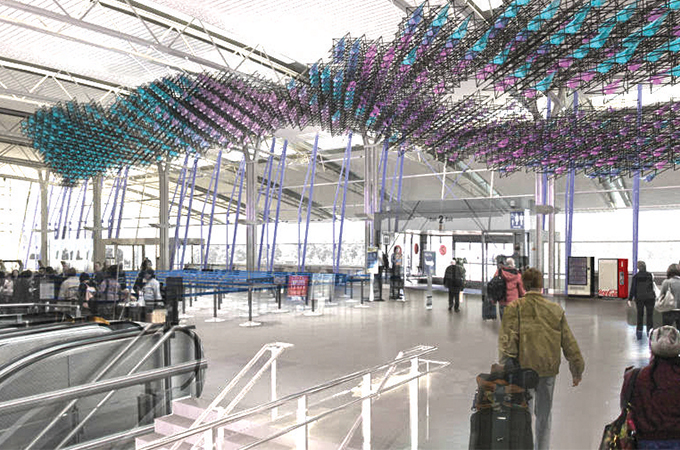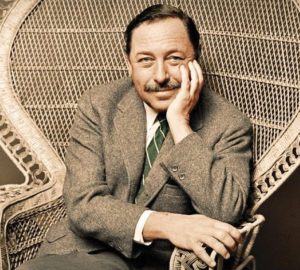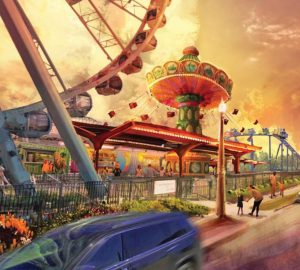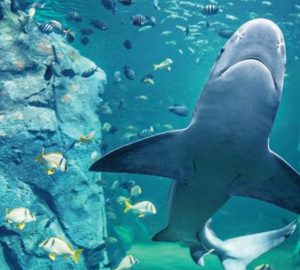bridgeton: Passengers in St. Louis-Lambert International Airport’s Terminal 2 soon will be able to imagine soaring through the airport even before they approach a plane. Undulating and softly colorful, a complex abstract sculpture dubbed Spectroplexus is being assembled from thousands of rhombus-shaped polycarbonate panels by eight students at Wash. U.’s Graduate School of Architecture & Urban Design. They hope to start preparing for its fabrication and suspension from the ceiling by Memorial Day. The 100-foot-long form is to grace the cavernous space on the south side of Terminal 2, above the ticketing lobby. Airport officials say the plans for the project, born from a collaboration between the university and Lambert’s Art and Culture program, are for Spectroplexus to ‘glide’ like a wing in the space (in place, of course) for a year to 18 months. The digitally designed translucent sheets, dyed with shades of pink and purple, will be suspended within a thin, wire-like lattice of hardened carbon fiber. In breathtakingly detailed renderings of the piece, colors emerge softly as they would in clouds fringed by rays of a setting sun. The sculpture will benefit from the immense, airy, light-filled environment where it will reside … a mechanized form that was engineered like an airplane wing, yet worked by hand in the final assembly process.
wildwood
You don’t have to be a Californian to know what 90210 is. It’s the ZIP code for Beverly Hills, dude. And you don’t even have to be a hipster in the metro to know what ‘the 124’ and ‘the 105’ are. Why, sans the ‘63’, they’re the ZIP codes for Ladue and Clayton, respectively. As of June 15, Wildwood will become that sort of cool, if not even more so. The far-west city actually will be able to claim two ZIPs: 63038 and 63040. These will automatically identify Wildwood as the default city. This represents a big postal change for Wildwood, which has had a total of seven ZIP codes, five of them shared with nearby municipalities. Those five will be identified as Wildwood when ‘plus-four’ exchanges are added to 63005, 63011, 63021, 63025 and 63069. Residents of this hilly town—one of the largest cities in the county and state both in population and land mass—say it’s about time. Wildwood, the third largest municipality in Missouri geographically, is known as a premier destination in the county for planned land use development.
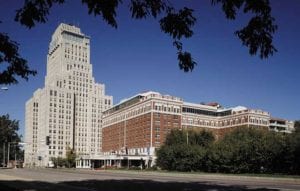 central west end
central west end
Perhaps the most recognizable structure in St. Louis, besides the Gateway Arch, is The Chase Park Plaza hotel complex … especially the 29-story, Art Deco residence tower. There was scuttlebutt in local print and electronic media last week that the new owners were going to change the name of the hotel, but it turns out only the brand name will change. Whew—that was close. Could you imagine someone coming in and messing with memorable names beloved by locals? Like, for instance, our central east-west artery, Highway 40? (What? It’s officially known as Interstate 64? Says who? But ‘Highway 40’ has just the right ring to it! It rolls right off the tongue … kind of.) The Chase’s Beantown-based new owners will be contracting with a hotel brand—they’ll leave the light on for you, but it’s not Motel 6. It’s called Sonesta. We thought that might be Spanish for a longer, overnight type of siesta, but no. In any event, it wouldn’t matter to most of us in the StL who takes over ownership of the hotel. By any other name, it’s still The Chase Park Plaza.
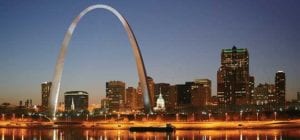 st. louis
st. louis
A quirky series of bus and walking tours of the city and region has begun, so listen up: Don’t miss the next one, billed as a time-travel experience. This summer, the Contemporary Art Museum St. Louis (CAM) and Renegade STL are partnering for a series of ‘mini explorations’ offered in conjunction with the CAM exhibition, Urban Planning: Art and the City 1967–2017. The three remaining tours, all on Saturday, provide multiple perspectives of St. Louis art, architecture, culture and social history. Through the work of 24 major artists, Urban Planning explores momentous social upheavals—the Civil Rights movement, gentrification, de-industrialization, white flight, the emptying of American cities and the expansion of the suburbs. With art that offers reflection and commentary upon the Pruitt-Igoe public housing complex, the legacy of segregation, and the dreams of a new urban ecosystem, the StL itself provides context. Tours bridge the ideas, concepts and artistic inquiries of the museum with the brick and mortar—and residue—of urban change. Guides will give their insights into the causes and effects of development in the city and beyond. The lineup of tours, all 11 a.m. to 1 p.m., is:
June 10: Downtown (walking tour)—Imagine exploring downtown when it was a Colonial fur trading village, then during the booming Gilded Age, and finally landing amidst the outline of the urban planning decisions of the mid-20th century.
July 29: New Town, St. Charles (bus tour)—The latest permutation in suburban living is New Town in St. Charles County. Starting with a bus trip west along I-70 (the nation’s first interstate), there’s time for participants to discuss the invention of suburbia, the racial desegregation that provoked white flight, and the socioeconomic and psychological effects of suburban living.
Aug. 12: Old North (walking tour)—Learn about Old North St. Louis in the context of our history, with a focus on the importance of the neighborhood in the city’s development and regarding issues related to space, place, historic preservation, displacement and transformation. Tour costs are modest: Admission for the Downtown and Old North tours is $15; the bus tour of New Town is $25, $20 for museum members. Now, just what are these ‘Renegades’ all about? Renegade STL, founded in 2012, offers fresh, original, off-beat tours showing off the grand history and architecture of St. Louis. Renegade guides are a self-described collective of nerds united by their love of the city and a desire to share their renegade perspectives of it. And CAM—a site for discovery, a gathering place in which to experience and enjoy contemporary visual culture—is at 3750 Washington Ave. in the Grand Center Arts District.
university city
Washington U. is going BIG, embarking on a major transformation of the east end of campus (where the iconic Brookings Hall faces Skinker Boulevard). Costing in excess of $250 million, the university’s largest capital investment ever on the Danforth Campus will include:
• three new academic buildings
• two new multipurpose facilities
• expansion of the Mildred Lane Kemper Art Museum
• an expansive new park
• an underground parking garage
The project will encompass 18 acres between Brookings Hall and Skinker Boulevard. Thankfully, renderings show that one of the most dramatic views in the Lou—from Skinker along the expansive green mall to Brookings and its lovely parapets—will not be obstructed. Rather, the new Ann and Andrew Tisch Park has been conceived as a way to enhance a reimagined entrance to the campus, between Skinker and where Hoyt Drive is presently. Seventy of 300 new trees will be planted along this mall area, creating a new Brookings Allée. Two of the three new academic buildings will be dedicated to engineering. Henry A. and Elvira H. Jubel Hall will house the Department of Mechanical Engineering & Materials Science in the School
of Engineering & Applied Science. James M. McKelvey Sr. Hall will accommodate the engineering school’s Department of Computer Science & Engineering and support the university’s data science efforts. Anabeth and John Weil Hall will be the new ‘front door’ of the Sam Fox School of Design & Visual Arts and provide faculty and students exceptional studio spaces and access to new technologies. The Craig and Nancy Schnuck Pavilion will include the Environmental Studies program in Arts & Sciences and the Office of Sustainability, as well as a variety of dining options. The pavilion also will support the university’s pedestrian and bicycle commuters with showers, lockers and bicycle parking. And the Gary M. Sumers Welcome Center will house the Office of Undergraduate Admissions and Student Financial Services, serving as a starting point for campus visitors. A ceremonial groundbreaking was held May 5, with construction set to begin May 22. Bravo to our very well-endowed university!





